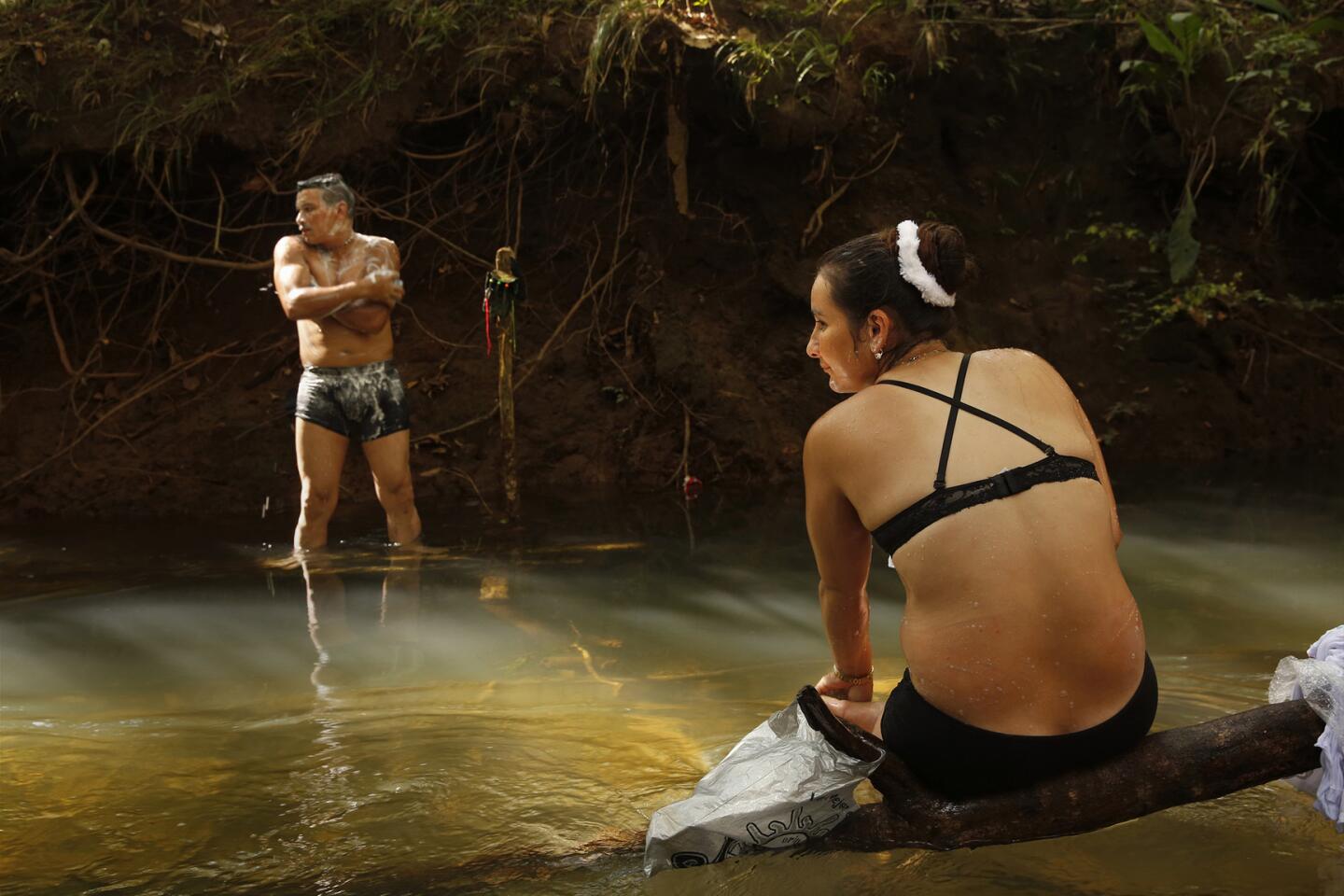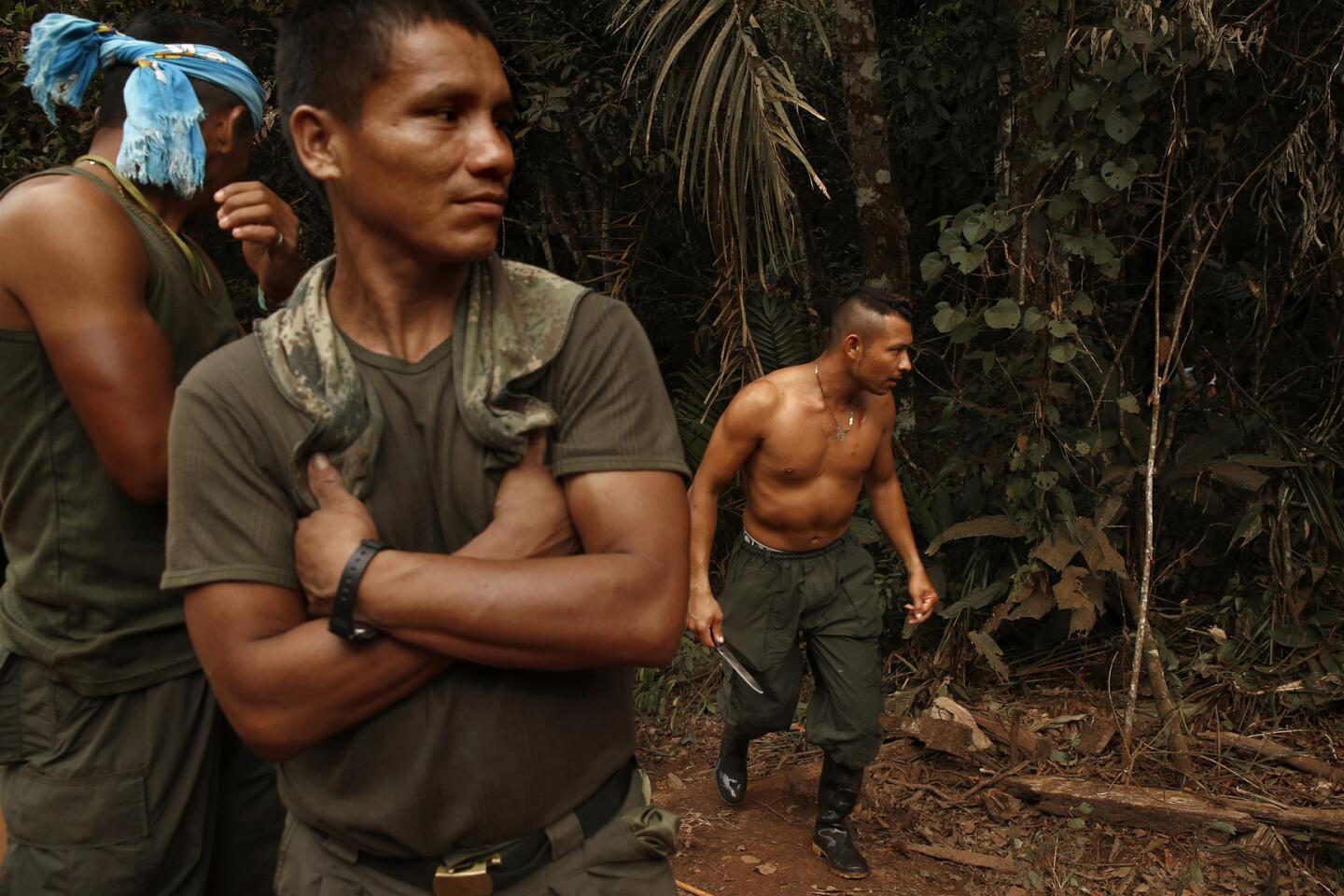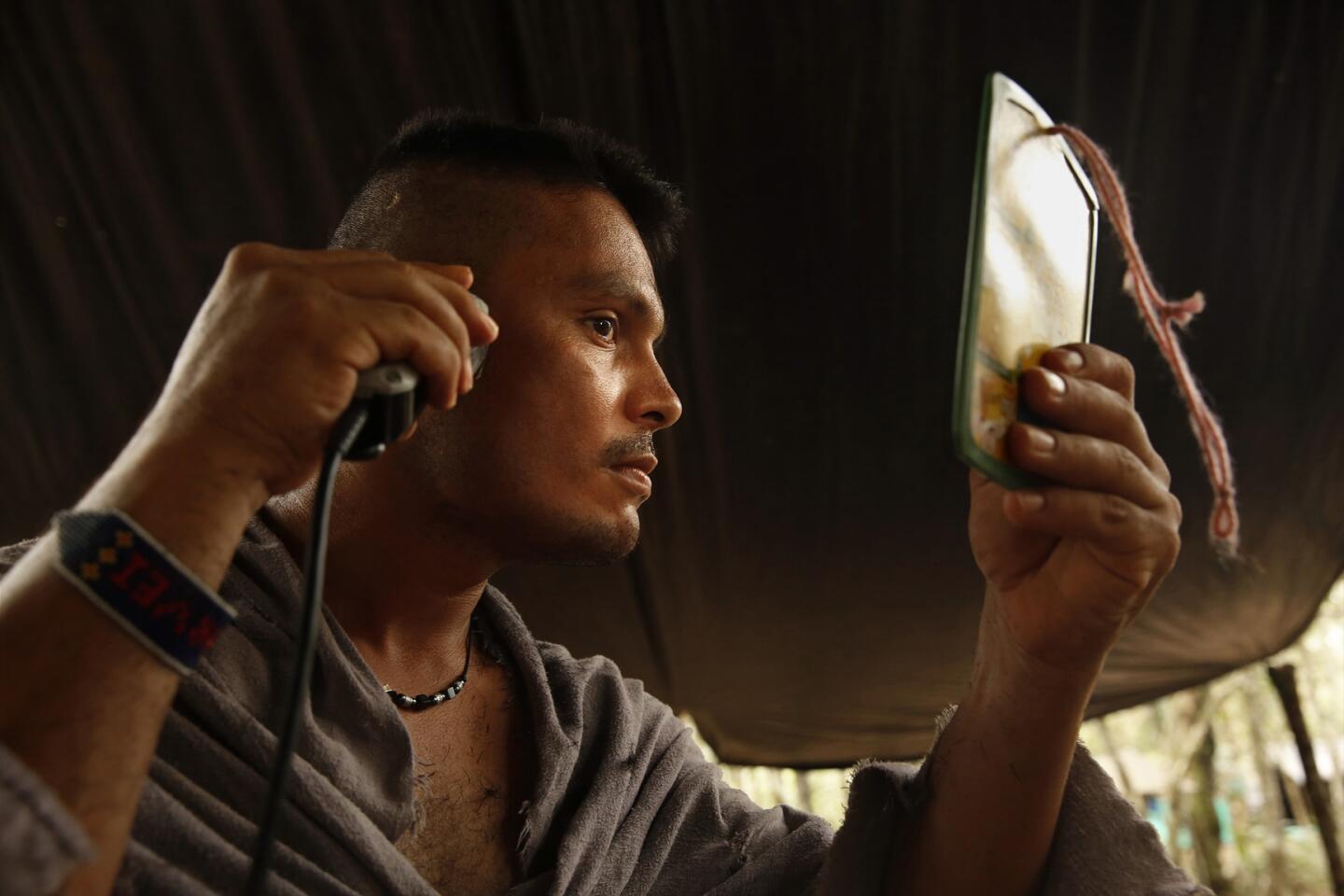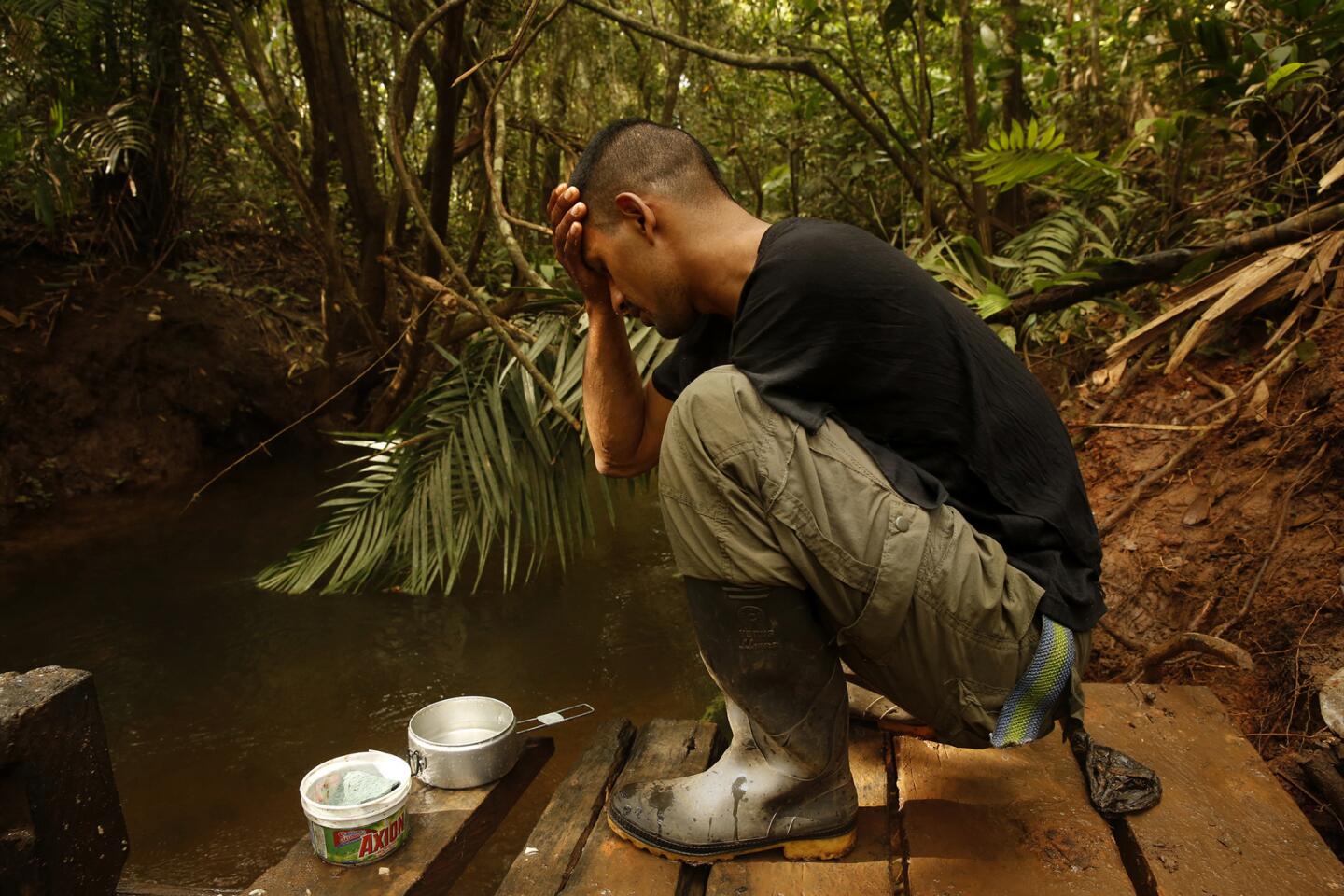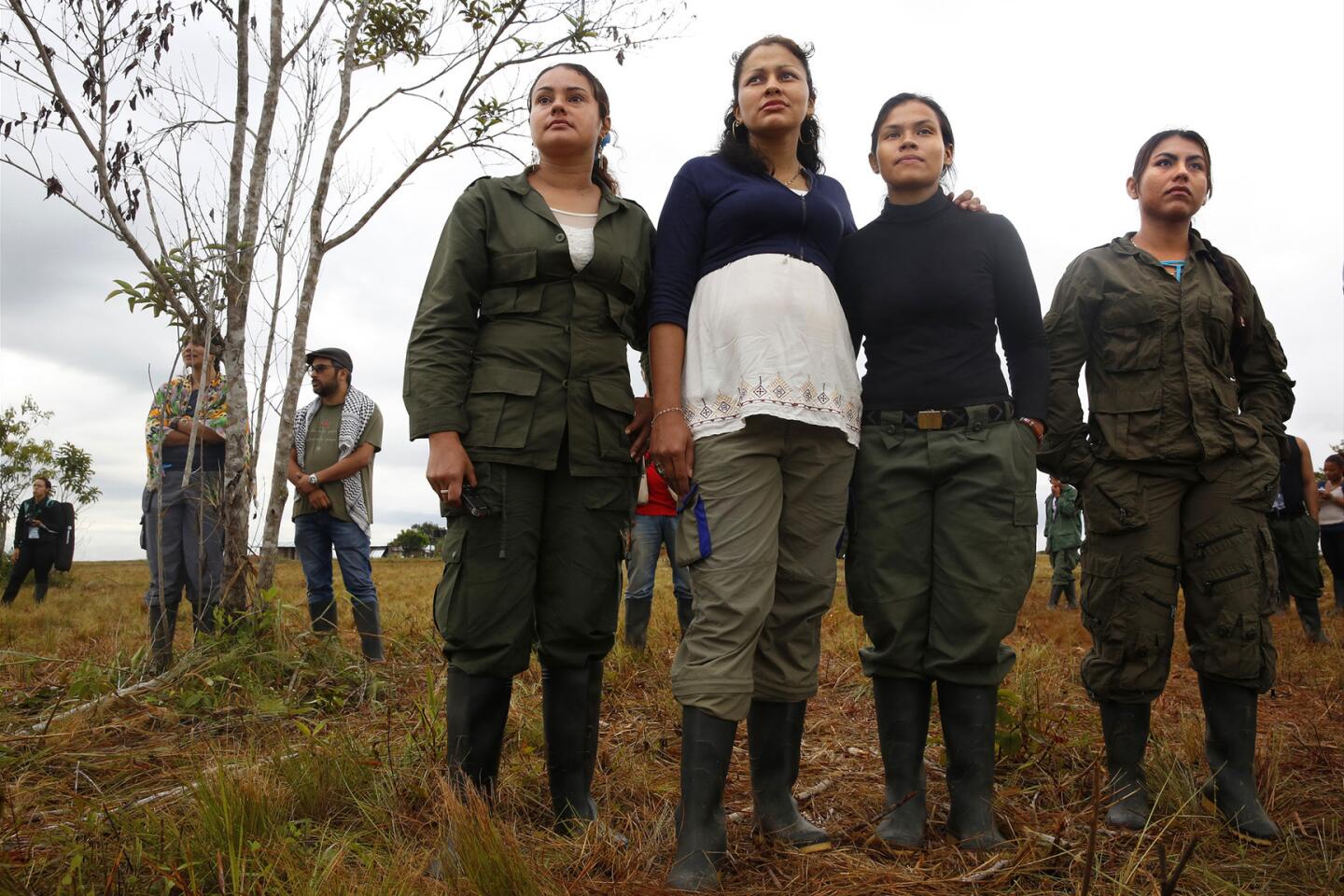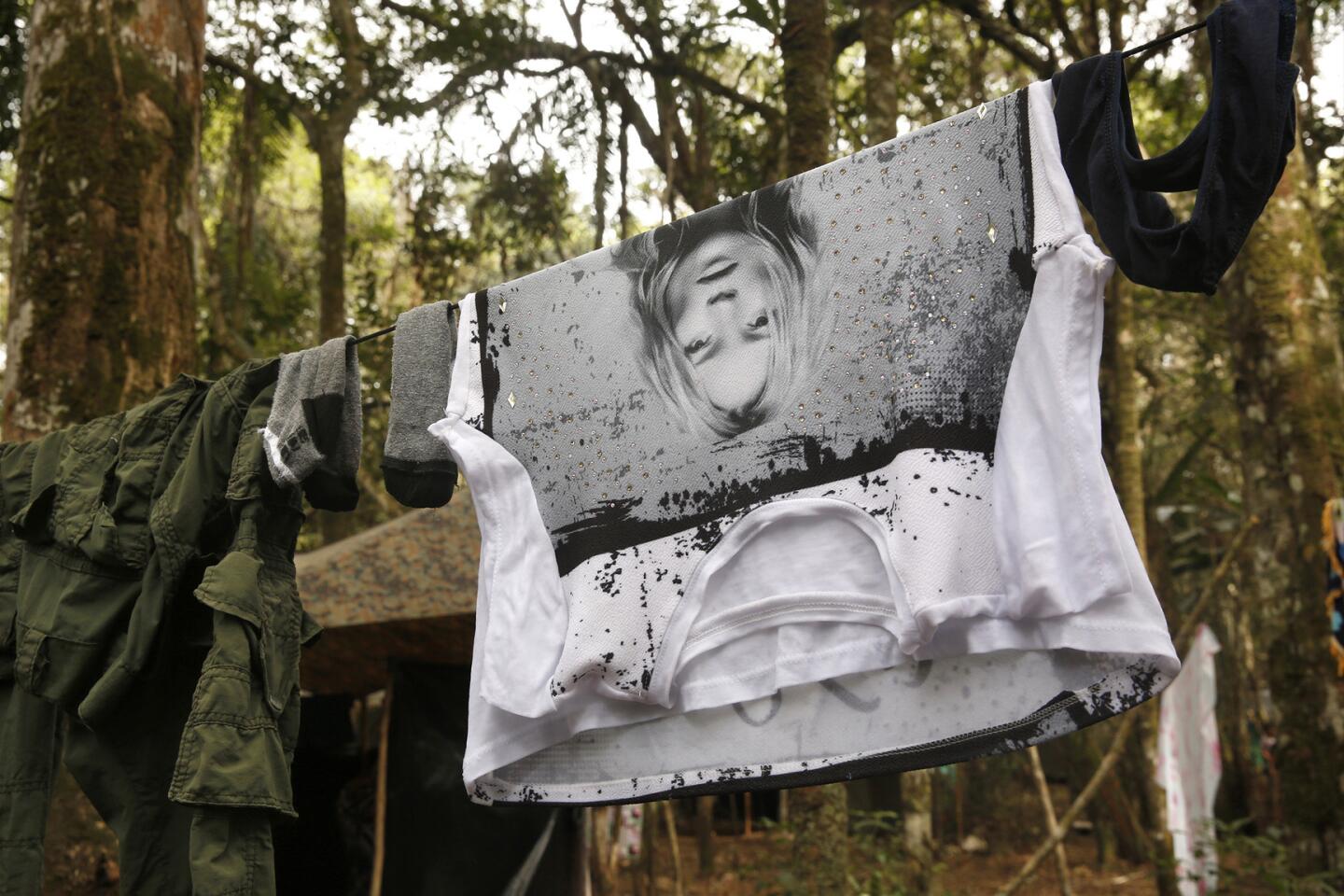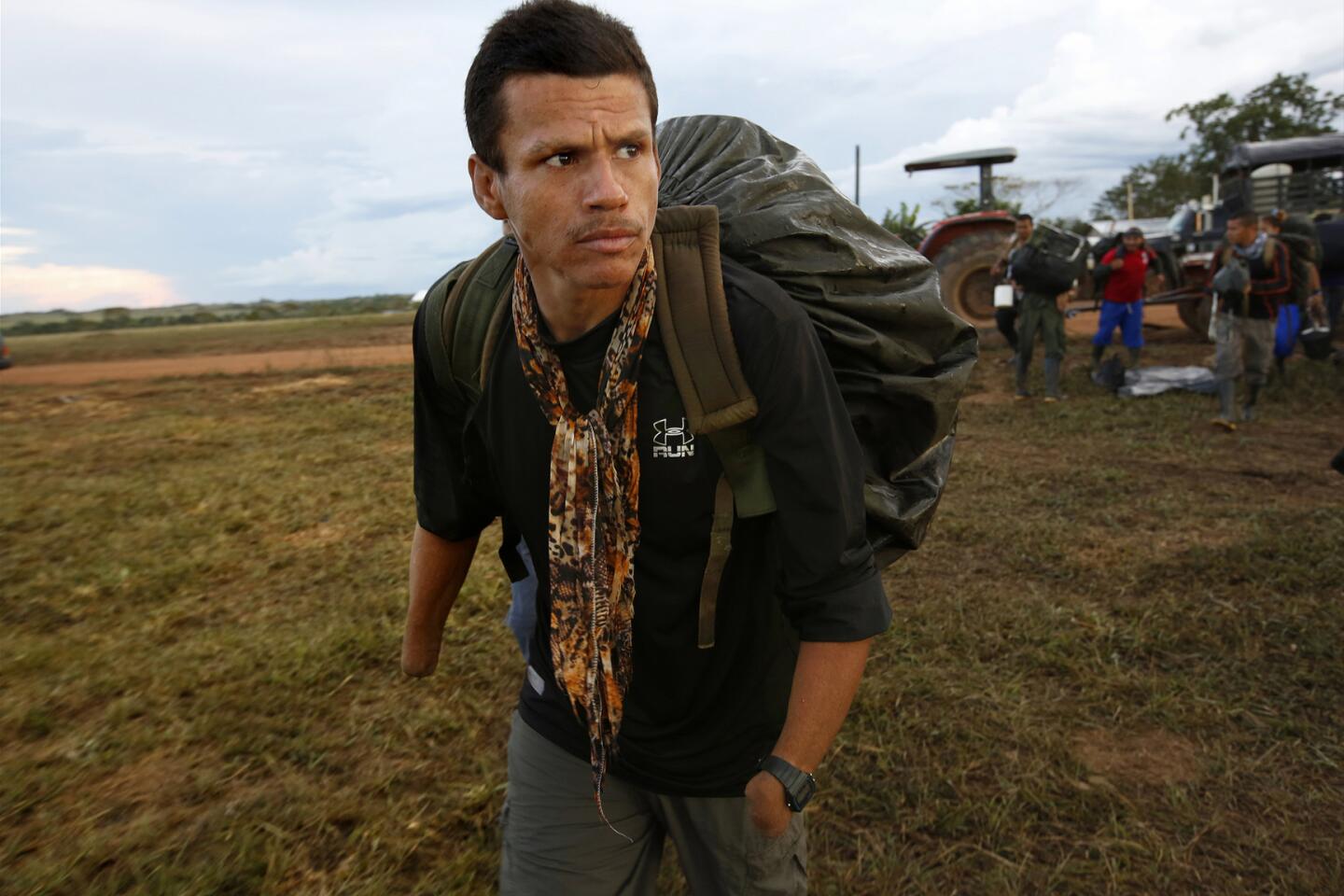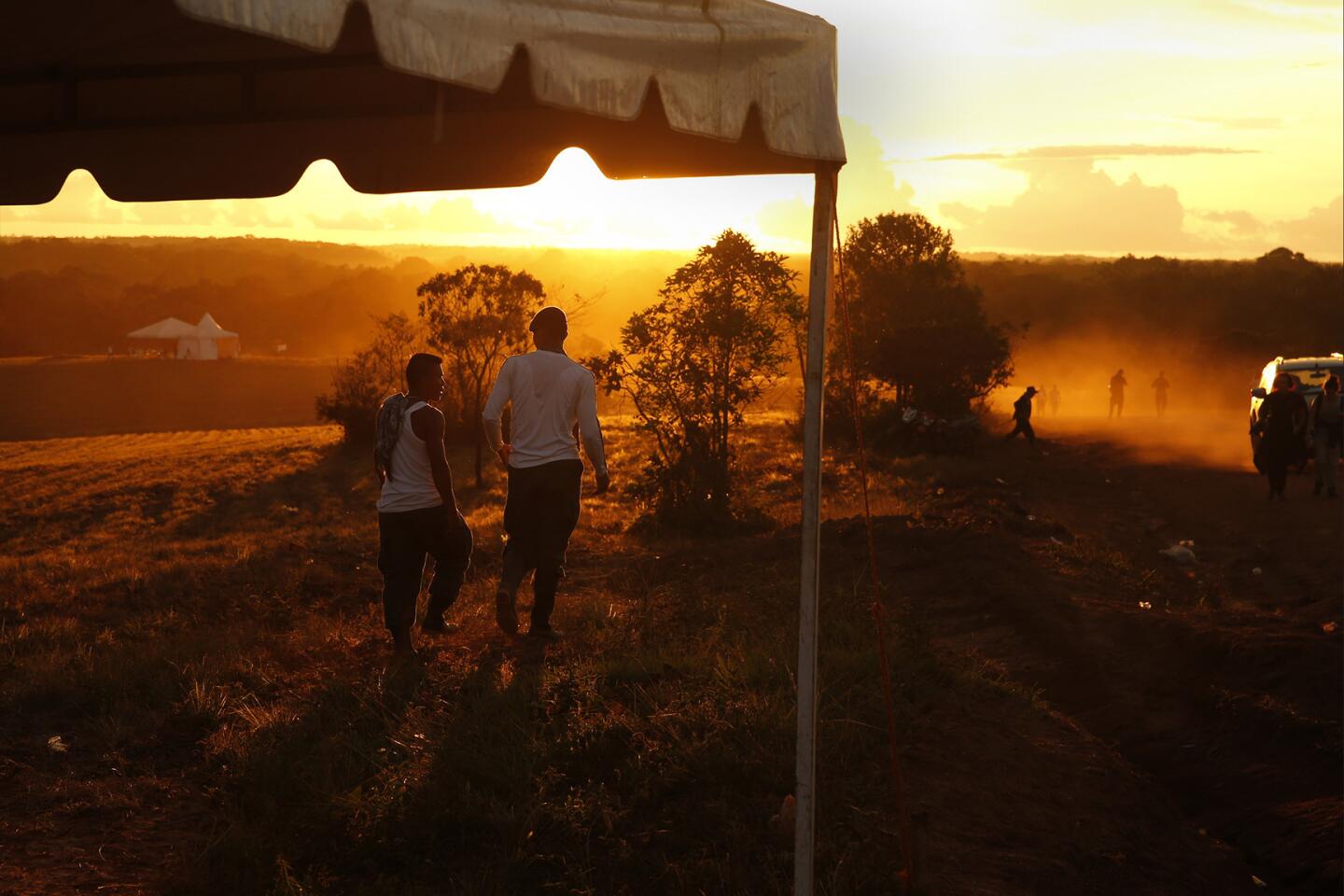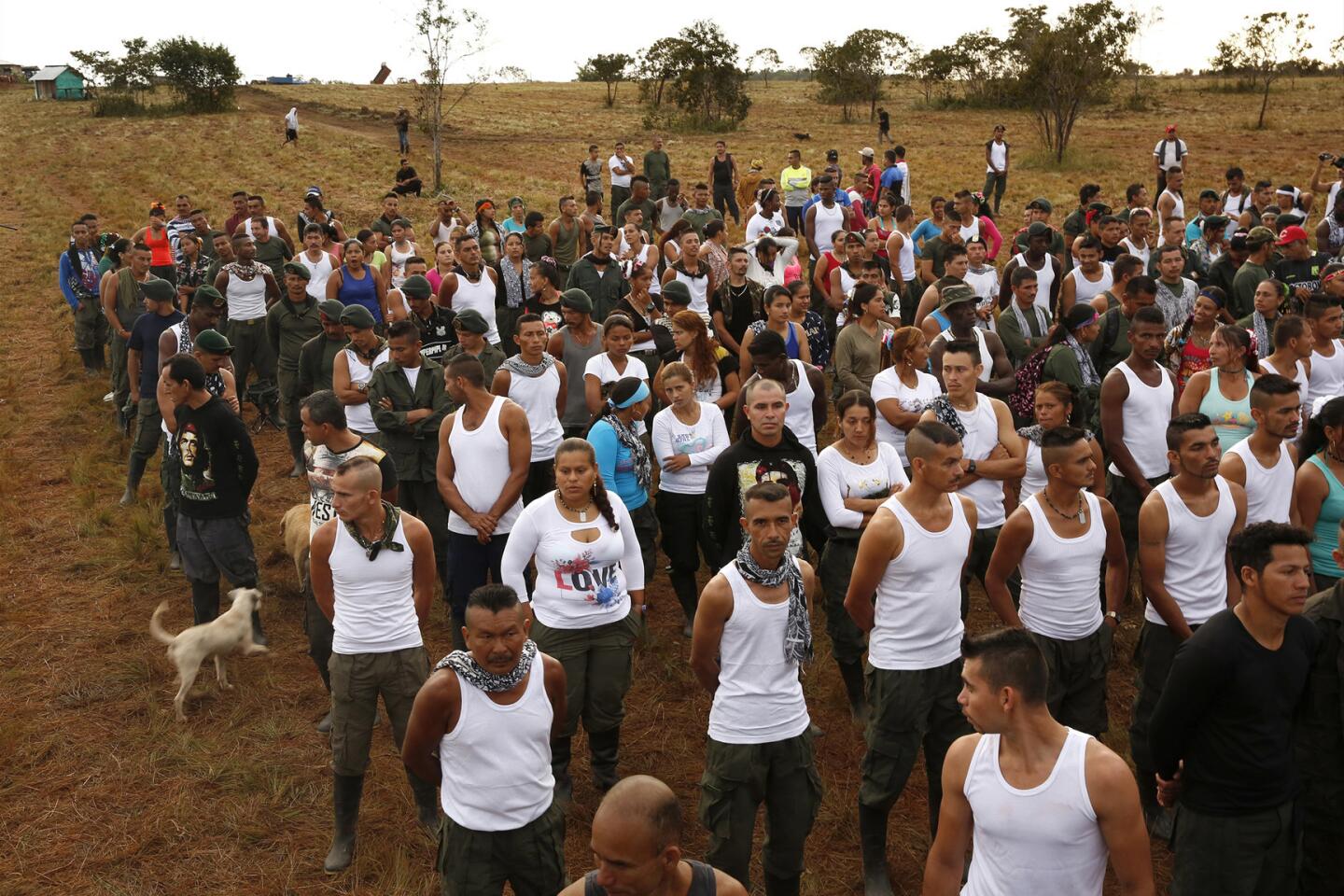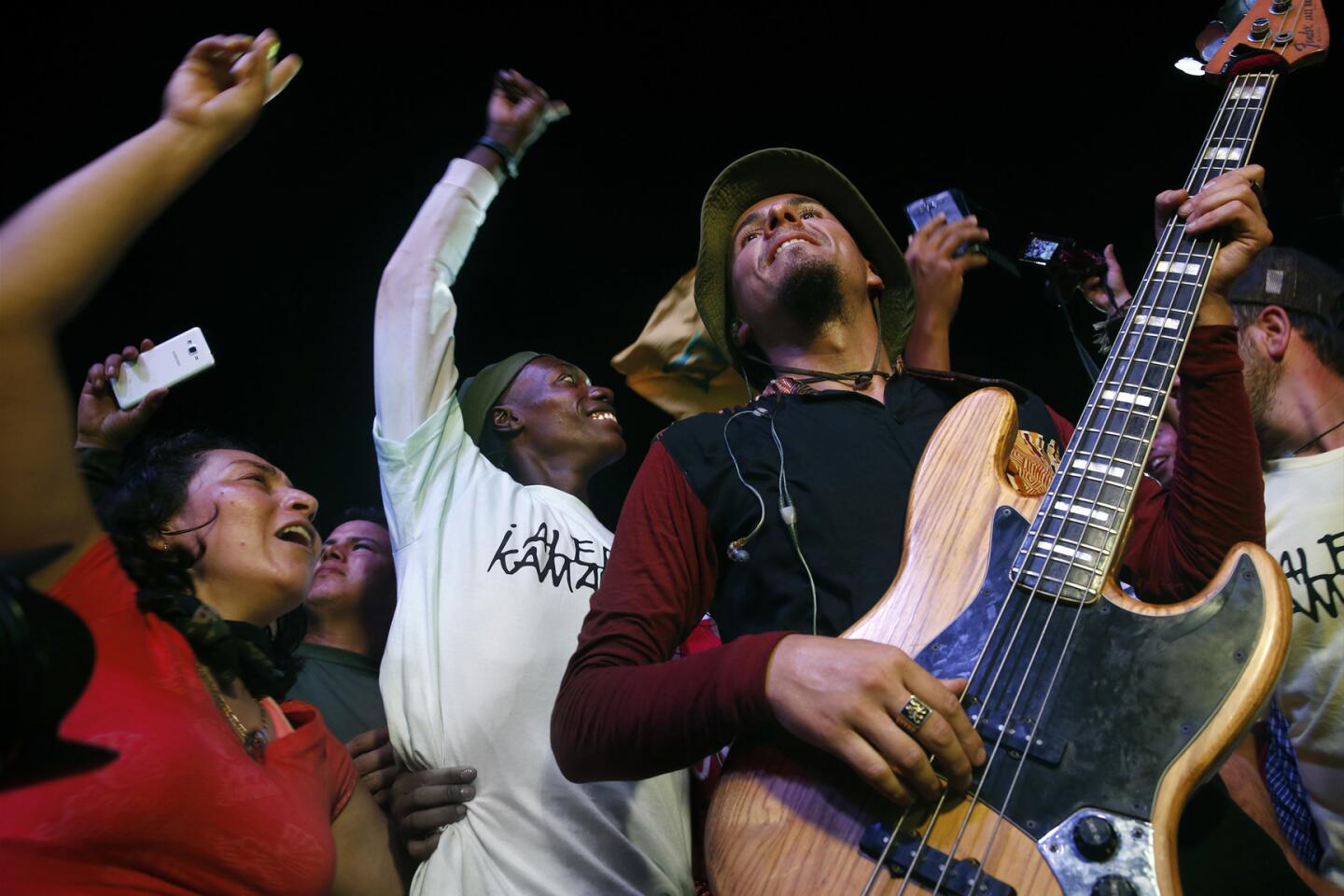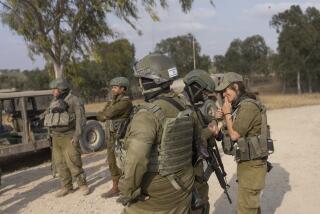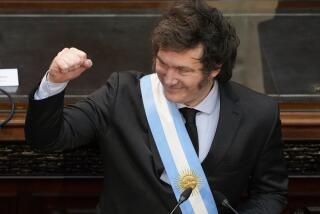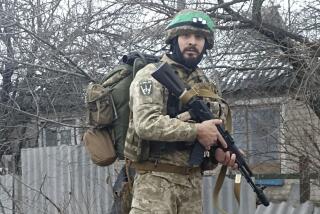Colombia peace deal officially ends Western Hemisphere’s longest war
Reporting from CARTAGENA, Colombia — As thousands of Colombians offered both hope and skepticism, the government of Colombia and leftist rebels who fought a bitter civil war for more than half a century signed a historic peace accord Monday, closing the Western Hemisphere’s longest armed conflict.
Heads of state from across the Americas watched as Colombian President Juan Manuel Santos and leftist guerrilla commander Rodrigo Londono formally ended the long and brutal war, then shook hands.
Colombians, almost all dressed in white, chanted “Si a la paz” - yes to peace - and “Si, se pudo” - yes we could.
“It is a historic day in Colombia,” said Secretary of State John F. Kerry, who sat next to Santos at the ceremony. “A lot of hard work has been accomplished. There’s a lot of hard work to go.”
By the only official accounting, more than a quarter million people — 267,162 in all — were killed in the conflict. During the 1990s, Supreme Court justices and politicians were routinely assassinated and Colombia teetered on becoming a failed narco-state.

FARC leaders are scheduled to sign a historic peace agreement, under which an estimated 7,000 peasant fighters would give up their weapons and restart life as Colombian civilians.
Bernard Aronson, a special U.S. envoy to the peace talks, noted how arduous the four years of negotiations had been. “This is a good peace,” he said. “There were no winners and no losers. Everyone won peace.”
President Obama has lauded the accord as one of his administration’s most important foreign policy achievements. Along with the U.S. rapprochement with Cuba, it marks the end of the last Cold War-era conflict in the Americas.
Much of the credit, U.S. officials say, goes to the U.S.-financed Plan Colombia, which poured billions of dollars into the country to help the government fight the guerrillas.
But critics say Plan Colombia, which is being used as a model for Central America and elsewhere, had serious flaws.
Even supporters of the strategy of full-bore military support for the Colombian army say human rights should have been addressed earlier.
The war gave rise to egregious abuses by the army, including extrajudicial assassinations and the rise of right-wing paramilitary death squads. The leftist guerrillas also committed atrocities, including sexual enslavement of women and kidnappings of civilians.
In recent years, Plan Colombia evolved into Paz (Peace) Colombia and began to shift money to nonmilitary sectors, such as justice institutions and development.
Although aid still tilts toward Colombia’s army, the Obama administration aims to spend $450 million helping the Colombian government extend basic services into long-neglected rural areas, fighting drug-trafficking and taking care of other civilian needs.
Distribution of U.S. aid is only one of the hurdles as the accord goes into effect. Sponsors of the peace process are bracing for multiple challenges.
Under the agreement, an estimated 7,000 fighters from the Revolutionary Armed Forces of Colombia, or FARC, will lay down their weapons and rejoin civilian life, along with 17,000 noncombatant followers.
“Many of these were taken [by the FARC] as children and they know no other life,” said Marcela Escobari, an official with the Latin America bureau of the U.S. Agency for International Development. “If they are not given alternatives, they will turn to some sort of illicit activity. Reinsertion will be very complicated.”
Kerry seemed to leave the door open Monday to removing the FARC from the U.S. list of foreign terrorist organizations. He said the Obama administration would review the designation as the rebels’ demobilization and reconciliation became “facts.”
The list of potential spoilers is long.
A former Colombian president is leading a campaign to derail the agreement. Dissident guerrillas may refuse to lay down their guns. Some communities where demobilized rebels are to be resettled have balked at the idea.
There are many in Colombia, especially those involved in the super-lucrative drug trade, who would be happy to see the country remain in a state of conflict.
U.S. officials are particularly worried that demobilized guerrillas could be targeted for assassinations to discourage peace, as has happened in other post-conflict societies.
“Spoiling is much faster and easier than making peace,” said a senior U.S. official, speaking on condition of anonymity in keeping with Obama administration rules. “It took four years to make peace, and it can be destroyed in four minutes.”
The United Nations will be charged with monitoring how the peace deal unfolds, much as it did at the conclusion of the wars in El Salvador and Guatemala in the 1990s.
But the Colombia mission will be more complicated. For starters, the country has more armed factions than existed in other Central American conflicts. It also has a far greater component of criminal activity, primarily in the form of drug trafficking.
In addition to helping to demobilize the rebels, the agreement calls for issuing land titles to peasants and expanding education and other government services into rural areas.
President Santos will put the deal to a popular vote Sunday. The referendum is not legally binding, but he has said he wants all Colombians to invest in peace.
“Vote yes! Let’s make peace now,” urge government billboards here in the colonial gem of Cartagena on the Caribbean coast.
Many in Colombia view the accord with a mix of hope and skepticism. Especially for those who suffered the most, there is dismay that many of the fighters will be given immunity from prosecution.
“Some people want justice,” said Jose Samuel Garcia, a priest in San Vicente del Caguan, a town in a FARC stronghold in southern Colombia. “Not everybody is capable of forgiveness.”
That seemed clear early Monday when Kerry met with former combatants and land mine victims at a vocational school where former guerrillas are learning to become hairdressers and carpenters.
“This, what is happening today, is very positive,” a 23-year-old former guerrilla who gave his name as Jonathan told Kerry. “But it is not going to end the war.” He predicted many FARC members will simply “change their armbands” and join other armed groups.
Times staff writer Kate Linthicum contributed from southern Colombia.
For more on global affairs, follow @TracyKWilkinson on Twitter.
MORE WORLD NEWS
Fears for Mexico’s economy grow as the peso nears the 20 to the dollar mark
More to Read
Sign up for Essential California
The most important California stories and recommendations in your inbox every morning.
You may occasionally receive promotional content from the Los Angeles Times.
